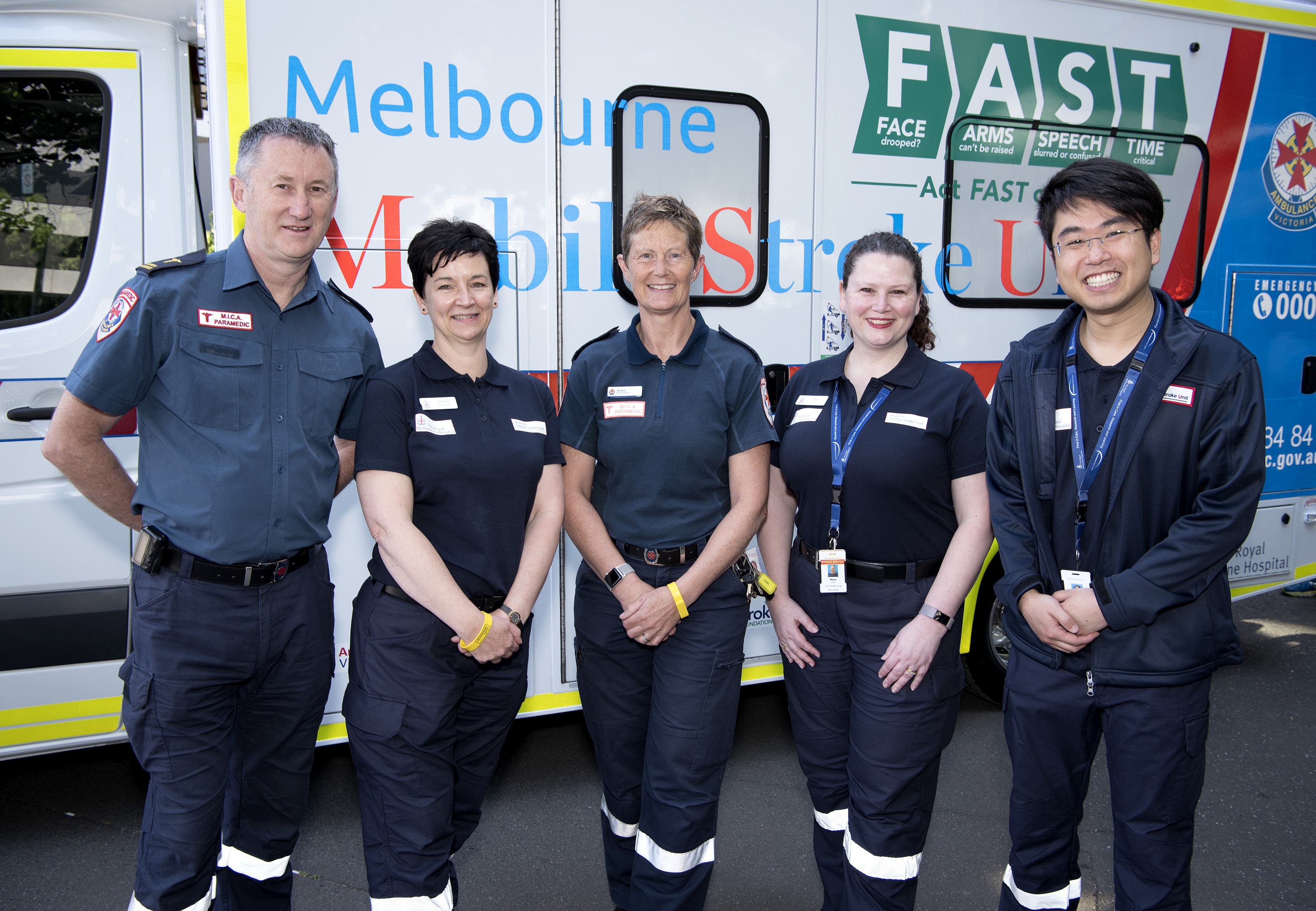This site may not work properly using older versions of Edge and Internet Explorer. You should upgrade your browser to the latest Chrome, Firefox, Edge, Safari, or any other modern browser of your choice. Click here for more information.
Your Stories
This is where we tell your stories, cover topical issues and promote meaningful initiatives.
How is stroke retrieval changing?
“For the first time in Australia’s history, the Stroke Alliance aims to close the health care gap in providing stroke care across our vast continent,” says Skye Coote (NP, CCRN, MN, NVRN-BC, ANVP-BC), the Alliance’s Senior Project Manager for Clinical Education. “The work of the Alliance will result in more patients with stroke receiving life-saving treatments and accessing world class stroke care.”

Skye Coote.
Flight nurses’ ability to improve stroke outcomes for rural and remote patients will soon improve, thanks to the Australian Stroke Alliance’s transformational prehospital retrieval program.
The Stroke Alliance aims to shrink a typically 3‑tonne hospital-based CT scanner into a smaller device so an airborne emergency department can travel to the patient. The team is overseeing the design, build and integration of world-first, lightweight and portable brain scanners that will be placed into air ambulances, allowing faster diagnosis of stroke in any setting.
As well, a truly national telehealth network will connect nurses, paramedics and country doctors to city-based neurologists to speed up pre-hospital stroke diagnosis and treatment.
The $40 million, federally-funded Stroke Alliance, incorporating 37 national health and tech partners, is determined to reach the eight million people living in rural and remote Australia who, through the tyranny of distance, do not have access to fast stroke diagnosis.
Drivers of change

MSU Paramedics.
Treatments for acute ischaemic stroke and haemorrhagic stroke are completely different and accurate diagnosis relies on an urgent brain scan. Access to a scan directly influences a patient’s time to treatment and their likely chance of survival.
Not only do rural and remote people have 20 per cent more strokes than those in urban settings, most have to travel more than 200km for help, doubling the likelihood of significant, lifelong disability. Only three per cent receive care in a specialist stroke unit compared to 77 per cent of people in metro settings.
The Alliance is also addressing the disproportionate impact of stroke on First Peoples. Although they make up three per cent of the population, they represent 16.5 per cent of Royal Flying Doctor air retrievals for stroke.
What happens next?
From 2023, the scanners and telehealth platform will be tested and validated in the clinical setting, providing an unprecedented level of support to first responders.
The Stroke Alliance is working in close partnership with the nation’s ambulance authorities and the Royal Flying Doctor Service in preparation for a pilot study of the brain scanners. A comprehensive education program will precede the launch of the devices to ensure first responders are fully informed and that their unique requirements have been met.
The telehealth platform, known as Zeus, really is the backbone of the program. It has been designed by perfusion imaging specialist, Associate Professor Andrew Bivard and neurologist, Professor Mark Parsons.
The Zeus app is already being tested in the field and is performing exactly as anticipated on Melbourne’s mobile stroke ambulance.
Early in 2022, it will be installed in selected road ambulances in NSW and Victoria. Paramedics who have seen and tested the Zeus app have been impressed and are keen to see it as a standard tool in the diagnosis of stroke.
How the technology works

The RFDS in Tanami Downs.
Zeus allows essential clinical data to be shared with the receiving hospital, influencing treatment decisions and increasing the safe and timely delivery of medications.
Sometimes, that will mean the stroke ambulance needs to go past the nearest hospital to reach a specialist stroke centre where an endovascular team is prepped, ready to remove a clot from a blocked blood vessel. According to Professor Parsons: “Getting the right patient to the right hospital as quickly as possible is critical”.
Based on the urban mobile stroke ambulance model, researchers know Zeus and the use of a brain scanner in the vehicle may lead to earlier treatment by up to two hours. Of course, the impact in rural and remote settings is yet to be measured but it is anticipated that a brain scan at the site of the stroke will allow thrombolysis or other treatment decisions to be made within minutes.
The impact of treating even one hour earlier provides a stroke survivor with more than one extra year of disability-free life.
As a result, instead of only being able to provide supportive in-flight care, staff will administer targeted, specialised stroke treatments to their patients. They will be able to treat patients with thrombolysis, antihypertensives, anticoagulation reversal agents, identify those patients needing specialist stroke care and accurately and confidentially triage stroke care in the pre-hospital setting.
Customised features are accessed from a phone or web-browser with audio-visual assessment of a patient, phone camera and image sharing, region-specific patient assessment forms, pre-notification for clinicians, individualpatient record export, administrator automatic reporting, and data collection for analysis.
The Alliance invites pre-hospital retrieval services to co-design the path ahead to ensure this ambitious initiative takes off in 2023.
At the end of the day, the team wants to reduce disability and deaths from stroke. Independent analysis has calculated that some 45,000 disability-adjusted life years (DALYs) will be saved over 30 years through the Australian Stroke Alliance’s interventions.
This project is an initiative of the Australian Stroke Alliance, bringing together 37 organisations committed to improving urgent pre-hospital stroke care across the nation. To find out more or to contact the Australian Stroke Alliance, visit www.austrokealliance.org.au. The Australian Stroke Alliance is an initiative of the Australian Government.